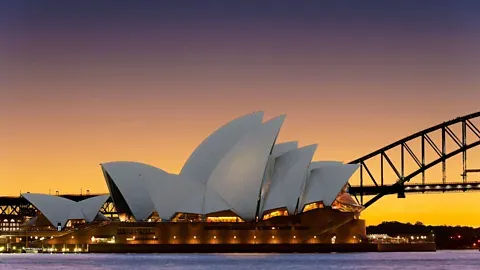The Turbulent Journey: Unveiling the Sydney Opera House's Troubled Legacy

- 1.1. The Turbulent Journey: Unveiling the Sydney Opera House's Troubled Legacy
- 2.1. Introduction to the Opera House
- 3.1. The Architectural Marvel
- 4.1. The Analysis of Controversies
- 5.1. Impact on the Cultural Landscape
- 6.1. Looking Ahead: Future Projections
- 7.1. Conclusion: A Complex Legacy
Table of Contents
The Turbulent Journey: Unveiling the Sydney Opera House's Troubled Legacy
On the shores of Sydney Harbor, the Sydney Opera House stands as a beacon of cultural significance and architectural brilliance. However, this iconic structure, celebrated worldwide, has a history fraught with challenges and controversy that often overshadows its magnificence. This article aims to shed light on the complexities surrounding its legacy, tracing its turbulent journey from conception to the present day.
Introduction to the Opera House
Inaugurated in 1973, the Sydney Opera House was designed by Danish architect Jørn Utzon, whose innovative vision was met with initial skepticism. The project, which took 15 years to complete, was marked by numerous budget overruns and political disputes. Initially estimated to cost 7 million AUD, the Opera House ultimately consumed over 100 million AUD, sparking public outcry and a significant debate regarding government spending and accountability.
The Architectural Marvel
The design of the Opera House, characterized by its distinctive sail-like structures, revolutionized the approach to modern architecture. It was the first of its kind to incorporate such dynamic forms, merging art and engineering seamlessly. However, the vision came at a cost. Utzon faced immense pressure from politicians and stakeholders, which eventually led to his resignation during the project's construction. This pivotal moment marked the beginning of a series of architectural compromises that deviated from Utzon’s original intent.
The Analysis of Controversies
Amid its beauty lies a tapestry of controversies. Following Utzon’s departure, numerous architects contributed to the completion of the Opera House, leading to disjointed elements in its architecture. This has stirred ongoing debates among critics and purists who argue that the final result compromises the integrity of Utzon’s groundbreaking design. Moreover, the political landscape surrounding the Opera House has often been turbulent, with funding and management disputes frequently hitting headlines.
Impact on the Cultural Landscape
Despite the controversies, the Sydney Opera House has become a cornerstone of Australia’s cultural identity. It hosts over 1,500 performances annually, attracting millions of visitors. As a UNESCO World Heritage Site, it enriches Sydney’s global appeal and continues to inspire creativity across various artistic disciplines. Nevertheless, the financial model of the Opera House remains a topic of discussion, particularly concerning how it balances economic viability with cultural significance.
Looking Ahead: Future Projections
As the years progress, the Sydney Opera House faces new challenges, including the need for modernization and sustainability. Recent initiatives aim to address climate change impacts, ensuring the venue remains relevant in an evolving world. The ongoing dialogue around its architectural integrity, alongside social responsibility towards community engagement, will determine its legacy in the 21st century.
Conclusion: A Complex Legacy
In summary, the Sydney Opera House encapsulates a rich narrative of triumphs and tribulations, showcasing the complexity of its legacy. From its tumultuous inception to its current status as a herald of culture, it serves as a reminder of the delicate balance between artistic vision, public accountability, and societal impact. This architectural marvel continues to evoke admiration and debate, ensuring that its story is far from over.


✦ Tanya AI